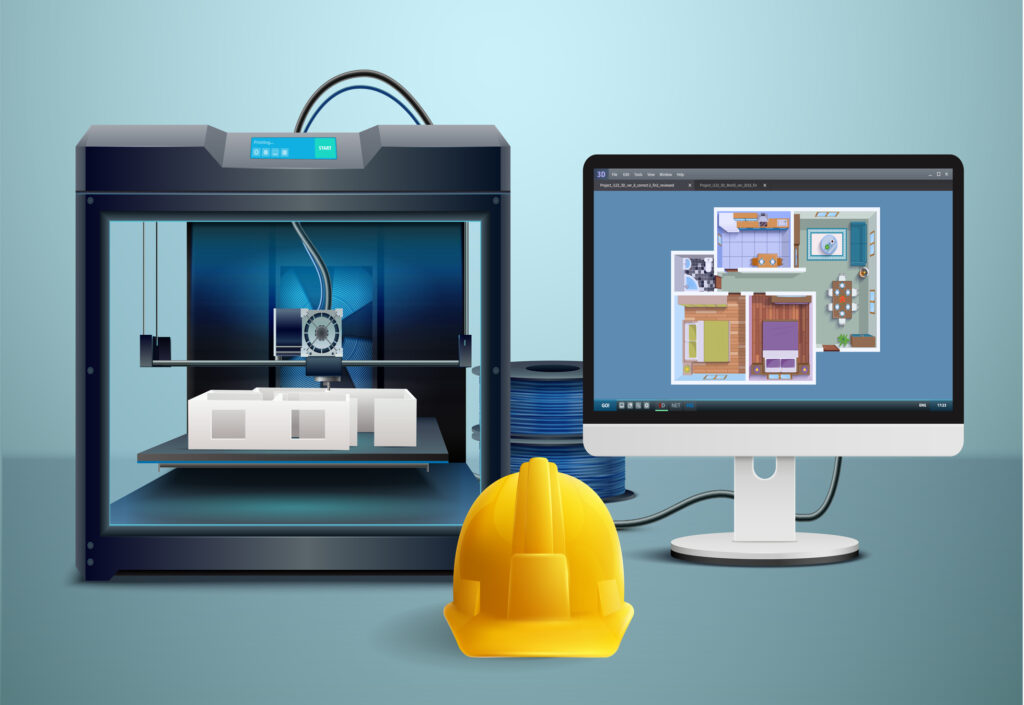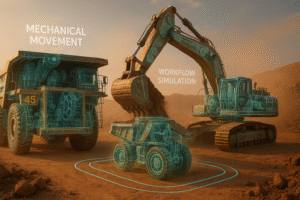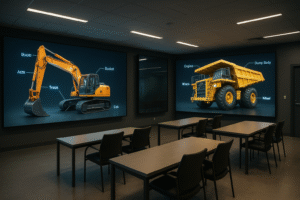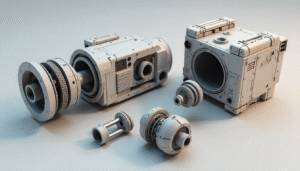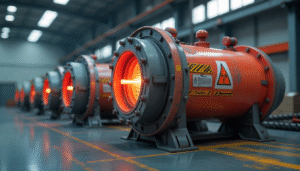3D animation is a powerful tool that significantly enhances industrial equipment demonstrations, allowing manufacturers to leverage 3D animation to showcase complex processes in an engaging visual format. By utilizing high-quality 3D models, companies can create animated videos that provide clear visualization of machinery and operations, making it easier for potential clients to understand how products function. This 3D industrial animation not only captures attention but also serves as an effective training resource to train employees on equipment use and safety protocols.
Through interactive 3D elements, viewers can explore various components and their interactions, bridging the gap between theory and practice. When businesses discover how 3D animation revolutionizes their demonstration techniques, they find that it transforms the way they present information. By partnering with an animation company specializing in 3D animation services, manufacturers can integrate 3D technology into their marketing strategies, elevating their brand presence and ensuring their audience fully grasps the value of their industrial equipment.
What is 3D Animation and Why is it Important for Industrial Equipment?
3D animation is a powerful tool that creates captivating 3D visuals to represent complex ideas and processes in various fields. In the context of industrial equipment, 3D industrial process animation is essential for visualizing intricate machinery and workflows. By utilizing 3D technology, manufacturers can showcase their products in a realistic manner, allowing for better understanding of the features and benefits of each piece of equipment. 3D animation brings a dynamic approach to presentations, enabling stakeholders to engage with the material more effectively.
Furthermore, 3D animation allows manufacturers to illustrate safety procedures and operational guidelines in a visually appealing way. 3D animations can depict intricate processes that might be challenging to explain through traditional methods. This enhances communication between teams and clients, ensuring everyone is on the same page. Overall, 3D animation offers significant advantages to the manufacturing industry by enhancing visualization, making it an indispensable asset for animation studios and businesses alike.
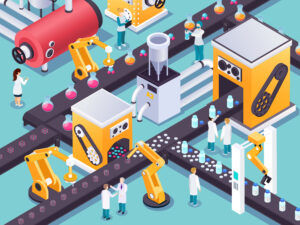
What are the key components of 3D animation?
Industrial 3D animation plays a crucial role in visualizing complex concepts within the industrial world. By using 3D animations, professionals can create stunning 3D animations that effectively demonstrate the design and functionality of industrial machines and equipment. This animation involves meticulous planning, where elements like equipment placement and realistic movement are meticulously crafted to ensure that the animation accurately reflects how physical equipment operates in real-life scenarios.
3D architectural animations further enhance the visualization process, allowing stakeholders to learn how 3D models can transform their ideas into tangible representations. 3D animation provides a powerful tool for showcasing projects before they are built, helping to prevent potential issues such as equipment malfunction. By collaborating with 3D animation companies, businesses can outsource their animation needs to an industrial agency that specializes in creating engaging animation videos for industrial environments.
Ultimately, 3D animation transforms the way we perceive and interact with industrial concepts, as it can bring abstract ideas to life. The power of industrial 3D animation lies in its ability to simplify complex processes, ensuring that audiences understand how equipment works and how it can be effectively utilized in various applications.
How does 3D animation differ from traditional video demonstrations?
3D animation significantly differs from traditional video demonstrations, especially in the realm of industrial applications. While traditional videos often rely on real-life footage to showcase products, 3D animation can bring a level of creativity and engagement that is hard to achieve with live-action. This technique allows for the creation of realistic industrial models, enabling viewers to see intricate details and functionalities that might not be apparent in a standard video.
Moreover, 3D animations create dynamic representations of product functionalities, allowing companies to highlight features in a visually appealing manner. Many industrial agencies now choose to outsource their animation needs to specialized firms, ensuring high-quality visuals that align with their marketing strategies. This shift emphasizes the effectiveness of 3D animation as a powerful tool in demonstrating complex industrial products and concepts.
How Does 3D Animation Improve Understanding of Complex Machinery?
3D animation has become an invaluable tool in enhancing the understanding of complex machinery, especially in industrial settings. By providing a visual representation of intricate components and their interactions, 3D animations allow users to grasp concepts that are challenging to convey through traditional methods. These animations can be used for industrial training, demonstrating how machinery operates in real time, which is particularly beneficial for new employees or those unfamiliar with specific equipment.
Moreover, many companies choose to outsource their 3D animation needs to specialized industrial agencies that have the expertise to create detailed and accurate representations. This collaboration not only saves time but also ensures that the animations are tailored to meet the unique requirements of the machinery being depicted. As a result, stakeholders can make informed decisions, troubleshoot issues more efficiently, and ultimately enhance productivity and safety within their operations.
What are the advantages of visual learning in industrial settings?
Visual learning in industrial settings offers numerous advantages that enhance both productivity and comprehension. By utilizing visual aids such as charts, diagrams, and videos, employees can grasp complex processes more effectively, reducing the likelihood of errors. This approach is particularly beneficial when outsourcing tasks, as clear visual instructions can bridge the gap between different teams, ensuring consistency in quality and performance.
Moreover, visual learning fosters better retention of information, allowing workers to recall procedures and safety protocols more easily. This is crucial in environments where operational efficiency is paramount, as it minimizes the time spent on retraining. Furthermore, an industrial agency can leverage visual learning strategies to tailor training programs that cater to diverse learning styles, enhancing overall team performance.
Ultimately, integrating visual learning into industrial training not only streamlines operations but also empowers employees to take ownership of their roles, leading to a more engaged and skilled workforce.
Can 3D animations simplify complex workflows?
In today’s fast-paced business environment, industrial agencies are increasingly turning to 3D animations to streamline complex workflows. These visual tools allow teams to visualize intricate processes, making it easier to identify potential bottlenecks and areas for improvement. By incorporating 3D animations into their operations, companies can enhance communication and collaboration among stakeholders, ensuring that everyone is on the same page.
Furthermore, when organizations choose to outsource their animation needs, they can leverage the expertise of specialized firms, resulting in higher-quality visuals that can effectively convey complicated concepts. This not only saves time but also allows in-house teams to focus on their core responsibilities, ultimately leading to increased efficiency.
In essence, 3D animations serve as a powerful tool for simplifying complex workflows, bridging the gap between intricate technical details and clear, engaging visual storytelling.
How can animations depict equipment interactions and functionalities?
Animations serve as a powerful tool to illustrate the intricate interactions and functionalities of industrial equipment. By visually simulating processes, they allow viewers to grasp complex machinery operations more intuitively. For example, an animation can depict how different components of a machine work together, showcasing the flow of materials and the sequence of actions involved. This is particularly useful for companies looking to outsource training or development, as animated visuals can effectively convey critical information without the need for extensive written manuals.
In What Ways Does 3D Animation Enhance Marketing and Sales Efforts?
In today’s competitive marketplace, 3D animation has become a powerful tool for enhancing marketing and sales efforts. By leveraging visually stunning graphics, businesses can effectively showcase their products in a way that is both engaging and informative. This immersive experience captivates potential customers, making it easier for them to understand complex features and benefits. Furthermore, companies can outsource their animation needs to specialized industrial agencys, ensuring that they receive high-quality content tailored to their brand identity.
Additionally, 3D animation allows for versatile applications across various platforms, from social media advertisements to interactive websites. This adaptability enhances brand visibility and can significantly increase conversion rates. By incorporating dynamic animations into their marketing strategies, businesses can create memorable experiences that resonate with audiences, fostering brand loyalty. In essence, the strategic use of 3D animation not only elevates marketing campaigns but also drives sales, proving to be an invaluable asset for modern businesses.
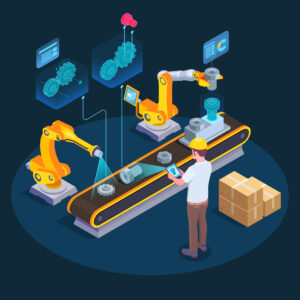
How do animated demonstrations capture viewer attention?
Animated demonstrations are an effective tool for capturing viewer attention, largely due to their engaging and visually stimulating nature. By utilizing vibrant colors, dynamic movements, and creative storytelling, these animations can simplify complex concepts, making them more digestible for a diverse audience. This is particularly valuable for organizations that choose to outsource their marketing efforts; animated content can be produced quickly and efficiently, allowing companies to focus on their core operations.
Furthermore, animated demonstrations can convey messages in a way that resonates emotionally with viewers, fostering a connection that static images or text alone may not achieve. This emotional engagement often leads to higher retention rates and encourages viewers to share the content within their networks. For businesses, this means a greater return on investment, as they leverage the power of animation to enhance their brand visibility and establish a strong industrial agency presence in a competitive landscape.
What role does 3D animation play in showcasing product features?
In today’s competitive market, 3D animation plays a pivotal role in showcasing product features, allowing businesses to present their offerings in an engaging and visually appealing manner. By utilizing advanced animation techniques, companies can create realistic representations of their products that highlight unique features, functionality, and design elements. This approach not only captivates potential customers but also enhances their understanding of the product’s capabilities.
For many organizations, partnering with an industrial agency that specializes in 3D animation can provide a significant advantage. These agencies possess the expertise and tools needed to produce high-quality animations that effectively communicate a product’s benefits. Moreover, businesses may choose to outsource this specialized work to focus on their core activities while ensuring that they receive top-notch visual content tailored to their target audience.
Ultimately, the integration of 3D animation into marketing strategies can lead to increased customer engagement and improved sales, as potential buyers are more likely to feel informed and excited about a product that is presented through dynamic visual storytelling.
How can 3D animations help in differentiating products from competitors?
In today’s competitive market, businesses must find innovative ways to stand out, and 3D animations offer a powerful solution. By utilizing high-quality 3D animations, companies can create visually striking representations of their products, highlighting unique features and functionalities that set them apart from competitors. This captivating visual storytelling can effectively engage potential customers and provide them with a clearer understanding of what differentiates the product from others available in the market.
Moreover, companies can choose to outsource their animation projects to specialized industrial agencies that possess the expertise and cutting-edge technology necessary to produce compelling animations. This not only saves time and resources but also ensures that the final product is of the highest quality. By partnering with these professionals, businesses can leverage their creative skills to enhance brand identity and attract a wider audience, ultimately leading to increased sales and market share.
How Can 3D Animation Facilitate Training and Safety Protocols?
The transformative power of 3D animation is increasingly recognized in industrial training and safety protocols. 3D animation can simulate complex industrial processes, allowing employees to visualize scenarios that may be difficult to grasp through static images. By employing 3D product animation and 3D models, companies can create immersive training experiences that engage learners more effectively than traditional methods. Animation services tailored for industrial contexts enable trainers to showcase complex concepts and the risks associated with equipment manufacturing, helping staff to better understand safety protocols.
Additionally, 3D animation allows for the development of prototypes that can be tested in virtual environments. This simulation not only aids in product design but also fosters a culture of safety by preparing employees for real-world challenges. As technology continues to evolve, the benefits of 3D animation in training become more pronounced, making it an essential tool for industrial companies aiming to stay ahead in an increasingly complex landscape.
What are the benefits of using animations in employee training?
Animations in employee training offer a plethora of benefits that enhance learning experiences and retention. One significant advantage is the ability to simplify complex concepts. By using engaging visuals, employees can grasp intricate processes more easily, leading to improved understanding and application in real-world scenarios. This is particularly beneficial when companies choose to outsource training to an industrial agency, as animations can standardize training materials across different locations and teams, ensuring that all employees receive the same quality of instruction.
Furthermore, animations can increase motivation and engagement among employees. The dynamic nature of animated content captures attention and keeps learners interested, reducing the likelihood of disengagement during training sessions. This is vital in today’s fast-paced work environments, where information overload can often lead to diminished focus. By integrating animations, companies can create a more immersive learning experience, ultimately leading to a more competent and confident workforce.
How can 3D animation highlight safety measures effectively?
3D animation serves as a powerful tool for illustrating safety measures in various industrial environments. By partnering with an industrial agency, organizations can create realistic simulations that effectively demonstrate potential hazards and the corresponding safety protocols. These animations can highlight the importance of using personal protective equipment, proper machine operation, and emergency procedures in a visually engaging manner.
Moreover, companies may choose to outsource the creation of these animations to specialized studios that have the expertise and technology to produce high-quality visuals. This collaboration allows businesses to focus on their core operations while ensuring that their safety training is both informative and captivating. The use of 3D animation can significantly enhance the retention of safety information, as it provides a dynamic learning experience that traditional training methods often lack.
What Tools and Software are Best for Creating 3D Animations?
When it comes to creating stunning 3D animations, several tools and software stand out in the industry. Programs like Blender, Maya, and Cinema 4D are favored for their comprehensive features and user-friendly interfaces. These platforms are particularly useful for teams within an industrial agency that may need to outsource specific tasks to enhance productivity.
Additionally, for those involved in equipment operation and simulation, tools like 3ds Max and Unity provide robust solutions for integrating 3D animations with real-time environments. The integration of these software solutions allows creators to produce intricate animations that meet the demands of modern visual storytelling.
Ultimately, the choice of software often depends on the specific needs of a project, ranging from character animation to architectural visualizations. By leveraging the right tools, animators can bring their visions to life with remarkable detail and creativity.
What are the top software options available for industrial animations?
When it comes to creating stunning industrial animations, several top software options cater to various needs. One of the most popular choices is Blender, known for its robust features and flexibility, making it ideal for an industrial agency looking to showcase complex machinery or processes. Another noteworthy option is Autodesk Maya, which is favored for its advanced modeling capabilities and animation tools, perfect for those who may choose to outsource animation projects.
For companies seeking to create real-time visualizations, Unreal Engine provides a powerful platform that integrates seamlessly with CAD software, allowing for immersive industrial simulations. Additionally, Cinema 4D is recognized for its user-friendly interface and excellent motion graphics capabilities, making it suitable for agencies that prioritize speed without sacrificing quality.
Ultimately, the choice of software will depend on the specific requirements of the project and the expertise of the team involved, whether in-house or through an outsourced solution.
How do you choose the right tools based on your needs?
Choosing the right tools based on your needs requires a strategic approach that aligns with your specific objectives. First, assess the nature of your project and determine whether it entails a complex process that might necessitate the involvement of an industrial agency. These specialized agencies can offer insights and resources tailored to your unique requirements.
Next, consider whether outsourcing certain tasks could enhance efficiency. By deciding to outsource specific functions, you can leverage external expertise, allowing your team to focus on core activities. This decision often hinges on cost-effectiveness and the need for specialized skills that may not be available in-house.
Ultimately, the right tools should not only fulfill your immediate requirements but also be scalable to accommodate future growth. Evaluate the features, user-friendliness, and integration capabilities of potential tools to ensure they align with your long-term goals.
What are the Future Trends in 3D Animation for Industrial Equipment?
As we look towards the future of 3D animation in the industrial equipment sector, several key trends are emerging. One significant trend is the increasing collaboration with industrial agencies that specialize in animation. These agencies are leveraging advanced technologies to create more realistic and immersive visualizations that can effectively communicate complex machinery operations.
Another trend is the growing tendency for companies to outsource their animation needs to specialized firms. This allows businesses to focus on their core competencies while benefiting from the expertise of dedicated 3D animation professionals. The outsourcing model not only enhances efficiency but also ensures access to cutting-edge animation tools and techniques that may not be available in-house.
Furthermore, the integration of augmented reality (AR) and virtual reality (VR) with 3D animation is set to revolutionize training and maintenance in the industrial sector. This technology will enable real-time, interactive experiences, enhancing safety and operational efficiency.
How is augmented reality (AR) changing industrial demonstrations?
Augmented reality (AR) is revolutionizing industrial demonstrations by providing immersive experiences that enhance understanding and engagement. Through the use of animation software, businesses can create dynamic, interactive visualizations of complex machinery and processes, allowing potential clients or employees to see how systems operate in real-time. This level of interactivity makes it easier to grasp intricate details that would be hard to convey with traditional methods.
Moreover, companies often turn to an industrial agency outsource for expertise in AR technologies, enabling them to leverage specialized knowledge without the need for in-house development. This collaboration helps streamline the implementation of AR solutions, making it accessible even to smaller firms. By integrating AR into their demonstrations, industries can significantly improve their marketing strategies, reduce training times, and ultimately drive sales by offering a clearer view of their products and services.
What role does virtual reality (VR) play in equipment training and showcases?
Virtual reality (VR) is revolutionizing the way organizations approach equipment training and showcases. By creating immersive environments, VR allows trainees to engage with complex machinery in a simulated setting, significantly reducing the risks associated with hands-on training. This technology enables users to practice operating equipment without the fear of damaging costly assets or harming themselves or others.
Moreover, VR facilitates a realistic experience that enhances learning retention. Trainees can repeat scenarios and refine their skills until they achieve proficiency, making the training process more efficient. Additionally, VR showcases provide an innovative platform for companies to present their equipment to potential clients, allowing them to experience the product in a lifelike environment.
As a result, the integration of virtual reality in equipment training and showcases not only improves skill acquisition but also boosts client engagement, making it a vital tool in today’s competitive landscape.
Conclusion
3D animation has transformed the way industrial equipment is demonstrated, making it more effective, engaging, and cost-efficient. Whether for marketing, training, or maintenance, leveraging 3D animation ensures a better understanding of complex machinery. Investing in high-quality 3D animations can significantly improve industrial communication and operational efficiency.
To learn more, visit NexxImage
FAQs
-
How does 3D animation improve industrial training?
3D animation provides detailed, step-by-step visual guides, making complex procedures easier to understand and follow. -
Can 3D animation reduce costs for industrial equipment demonstrations?
Yes, by eliminating the need for physical prototypes and live demonstrations, 3D animation significantly reduces costs. -
What industries benefit most from 3D animation?
Industries such as manufacturing, aerospace, automotive, and healthcare benefit greatly from 3D animation for training and product showcasing. -
How can businesses integrate 3D animation with AR and VR?
Businesses can enhance user experiences by incorporating 3D animations into AR and VR platforms for interactive simulations. -
How long does it take to create a 3D animation for industrial equipment?
The timeline varies based on complexity but typically ranges from a few weeks to several months. -
What software is commonly used for 3D animation in industrial applications?
Popular software includes Blender, Autodesk Maya, 3ds Max, Cinema 4D, and Unity for AR/VR integration. -
Can 3D animation be customized for specific industrial workflows?
Yes, 3D animations can be tailored to match precise industrial processes, ensuring accuracy and relevance. -
How does real-time rendering software enhance 3D animations?
Real-time rendering tools like Unreal Engine and Unity allow for interactive and instant visualization, improving training and presentations.

